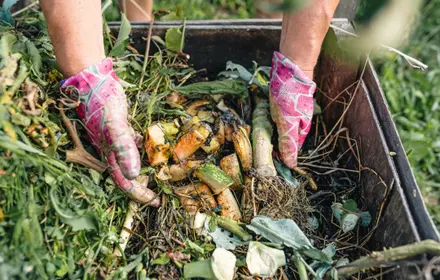How to start composting

As the snow melts and the days grow longer, it’s the perfect time to embrace the renewal of spring. If you’re a gardener—or just someone who wants to reduce household waste—starting or refreshing your compost pile is a fantastic way to enrich your soil and give your plants a nutrient boost for the growing season ahead.
Why Compost?
Composting is nature’s way of recycling. It turns food scraps, yard waste, and other organic materials into nutrient-rich soil that improves plant health and promotes biodiversity. By composting, you’re also reducing landfill waste and cutting down on greenhouse gas emissions. It’s a win-win for both your garden and the planet!
Refreshing Your Compost Pile
If you already have a compost pile, spring is an ideal time to check in on it and give it a refresh. Here are some quick tips to get it in top shape:
- Turn the pile: Over winter, compost piles tend to settle. Aerate it by turning the pile with a garden fork to reintroduce oxygen and speed up decomposition.
- Check the moisture: Your compost should be as damp as a wrung-out sponge. If it’s too dry, add water; if it’s too wet, mix in dry leaves, shredded newspaper, or straw.
- Add fresh material: Start feeding your compost with new kitchen scraps, grass clippings, and small branches. Balance “green” materials (fruit peels, coffee grounds, vegetable scraps) with “brown” materials (dried leaves, cardboard, sawdust) for optimal decomposition.
- Remove finished compost: If your pile has fully decomposed material at the bottom, it’s ready to be used in your garden beds, pots, or lawn.
Starting a New Compost Pile
If you don’t have a compost pile yet, don’t worry—starting one is easy! Here’s how:
- Choose a spot: Pick a well-drained, partially shaded area in your yard.
- Decide on a method: You can use a compost bin, a tumbler, or simply create a designated pile.
- Layer materials: Start with a base layer of coarse material (twigs or straw) for drainage, then alternate between green and brown materials.
- Maintain the balance: Keep your compost aerated and moist, and turn it regularly to speed up the breakdown process.
- Be patient: Composting takes time, but with the right balance and maintenance, you’ll have rich, dark compost in a few months.
Using Your Compost
Once your compost is ready, you can use it to enrich your soil, create nutritious mulch, or make compost tea for an extra boost. Adding compost to your garden improves soil structure, retains moisture, and provides essential nutrients for healthy plant growth.
Get Started This Spring!
Spring is a season of renewal, making it the perfect time to refresh or start a compost pile. Whether you’re a seasoned gardener or a beginner, composting is a simple yet impactful way to nurture your plants and help the environment. So, gather those kitchen scraps, turn that pile, and get ready for a bountiful garden season ahead!
Happy composting!



